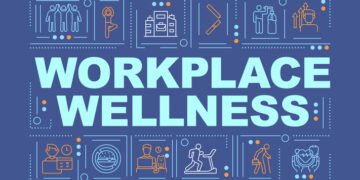
What Is It and How to Treat It
Getting pimples in your 40s and 50s? Yes, it happens. While acne is often thought of as something you experience in your teens, many people can get breakouts in their 30s, 40s, 50s and beyond so don’t be surprised if you’re discovering some zits these days.

What is adult acne?
You might be wondering if the acne you’re experiencing now as a grown woman is different than your pimples as a teenager. While it may seem not the same as what you experienced in high school, it’s not that different. “Essentially, the same factors that cause teen acne also cause adult acne.
The difference is that adult female acne is more driven by hormonal factors such as the menstrual cycle,” says Dr. Julia Carroll, a board-certified dermatologist at Compass Dermatology in Toronto. She adds that stress and personal care products can also be factors in your breakouts as an adult. So your acne in your teens, 20s, 30s, 40s, 50s or 60s isn’t different depending on your age. “As dermatologists, we group adult acne together regardless of the decade,” says Dr. Carroll.
You may notice, though, that your breakouts tend to be appearing along your jawline. This is because hormonal acne, which is what adult female acne is more driven by, tends to occur along the jawline, whether in teens or adults, says Dr Carroll. Also, you may notice that the acne lesions tend to be deeper and less comedonal. “The reason is that this area of the face is more sensitive to hormonal fluctuations which affect the sebaceous, or oil-producing glands.”

Adult Acne Treatments
Now, while the treatments and causes for acne are the same regardless of age, for women who are 40-plus, there is the factor of whether she still has the ability to get pregnant, explains Dr. Carroll. Your dermatologist may not prescribe a certain type of medication if you are of childbearing age. Barring that, however, treatment options are the same independent of age. It has more to do with the individual’s skin type (ie oily vs dry) than their age, explains Dr. Carroll.
So does this mean you might be turning back to the products you used as a teen? Possibly. “Many people do very well with benzoyl peroxide. It’s all about designing a routine that will treat the type of acne they have while taking into account their background skin type. We often use different products on different days to get the right mix and recommend starting low dose, slowly and working up to higher more frequent dosing,” explains Dr. Carroll.
Ultimately, your dermatologist will approach your treatment based on your particular concerns. That said, most acne sufferers, if they can tolerate the product, would do well with a retinoid. Bonus: It has the added benefit of being a powerful ingredient for the prevention of fine lines and wrinkles. If you’re looking for a cleanser, look for one containing an active ingredient such as glycolic acid or salicylic acid. “Because cleaners are ‘short-contact’ they are excellent for those with sensitive skin,” explains Dr. Carroll.
Holistic Approach is Key When It Comes to Treating Your Adult Skin
Dr. Julia Carroll of Compass Dermatology in Toronto stresses the importance of working with each patient with an individualized approach. Developing an individualized treatment program for clients is just as important for esthetician and ayurvedic practitioner Jean Eng, too. For Eng, 68, the acne she experienced as an adult took a long time to manage because both medical and spa professionals for years focused solely on the acne breakouts. For 15 years, she suffered from acne and other skin concerns – since she kept getting treated with a universal solution for acne, her skin didn’t improve.

Eng’s daughter, Kristen, had a similar experience, and their experience is what prompted the duo to create skincare products. Their approach? “Along with biology and ayurveda, we consider geography/ancestry–it’s also a major factor in finding the root cause of acne,” she explains.
Biology, in that the skin’s structure is universal, and geography or ancestry–Eng says this ties to evolutionary biology (“how the skin adapts and thrives in different climatic conditions,” she says). Given that most of us have skin better suited to other geographic areas, we need to adjust how we supplement our skin through the products we use, she says.
For Eng herself, it’s been a long journey – from daring to put oil on her oily blemished skin in her 30s to working on her skin texture through her 50s.
She now follows a fairly simple four-step routine (which involves gently cleansing, an oil-free hydrating oil, an anti-aging face oil followed by a rich moisturizer for sensitive skin) but she is the first to admit that she’s impatient and balances her desire to look great with her lack of desire to complete a more in-depth skincare regimen. It comes down to recognizing that to develop a custom program with the help of a dermatologist and esthetician that works with your lifestyle and schedule, you need to address more than just the acne you’re experiencing.
















